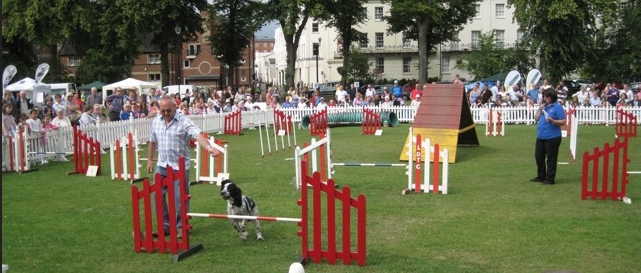Understanding a Dog’s Paw Preference Can Help in Obstacle Performance Training
Researchers have actually discovered a link between paw preference and efficiency. Here’s how it works.
Planning to train a top efficiency dog? You might start by offering him a test to see whether he prefers one paw over another.
Paw choice has actually been connected with several aspects of knowing and obstacle performance. It’s not that southpaws have funny handwriting; in fact, it’s more that pet dogs who have a strong preference for either side have the tendency to do much better at numerous learning and efficiency tasks, compared to ambidextrous pet dogs.

So how do you inform if your dog prefers one paw?
Asking him to write his name does not work well. Rather, scientists have utilized a number of methods to determine paw preference.
Stick some tape to the canine’s nose and see which paw he uses to scrape it off. Or put a blanket on the pet dog’s head and see which paw he utilizes to obtain it off. Put some food in a can or a Kong toy and see which paw he uses to hold the container or toy.
Further, it turns out that a canine’s performance can be affected by what side of the pet dog his handler is on. This is apart from the routine formed by always heeling on the individual’s left side.
These 2 findings can have ramifications for how you pick and train a dexterity canine, and possibly any other dog required to do complicated jobs.
Does it matter exactly what side you are on?
Scientists checked 19 adult pet dogs of numerous ages and breeds and blends and sizes. The dog-owner sets were chosen from groups in which individuals consistently handled their canine from both sides both throughout agility training and everyday activities. To evaluate paw preference, each pet dog was provided a Kong filled with sticky food and tested for two-minute periods when a month for 10 months.
The pets were likewise tested on 2 agility series: a dive followed by an A-frame and a dive followed by 12 weave poles. The groups negotiated both series with the handler on the right and on the left sides. They were evaluated repeatedly, 3 times in a day, two times a week over 2 weeks, till they had 12 trials for each condition.
Negotiating the weave poles was thought about to require far more attention from the canine compared with the A-frame. The pet dog has to get in the weave poles with the first pole on its left, and can’t miss out on any of the poles till leaving after the last one.
In general, the pets took longer to finish the weave poles and made more errors in them when their owners were on the pet’s left side. The efficiency on the A-frame was not almost as adversely impacted, since the A-frame is a much easier and spatially less intricate task.
The degree of this impact pertained to how distractible the dog was, as determined by the responses on the questionnaire. The more distractible the pet, the more negatively the pet was affected by the owner being on the left side.
And back to paw preference: Pet dogs with weaker paw choice were more easily distracted and were slower to finish the weaves when the owner was on the preferred side.
There was a substantial correlation between the strength of paw choice, trainability, and weave pole speed.
These findings make good sense in light of exactly what researchers find out about brain lateralization. Info from the dog’s left visual field travels to the ideal hemisphere of the brain. As in people, this side is more associated with psychological actions. And this makes stimuli that evoke an emotional response– stimuli like an owner– potentially more disruptive when it exists to the pet’s left side.
“Visual analysis of the owner primarily by the left eye was likely to increase the arousal state of the canines, therefore sidetracking them during agility challenges efficiency,” said the article’s authors.
Agility handlers describe “on-side” (handler on the pet dog’s right) and “off-side” (handler on the pet dog’s left) weaves, and lots of feel their dogs don’t do too on off-side weaves. They have typically attributed it to training the on-side weaves more, or initially– but, in truth, the distinction might be hardwired in their pets’ brains!
